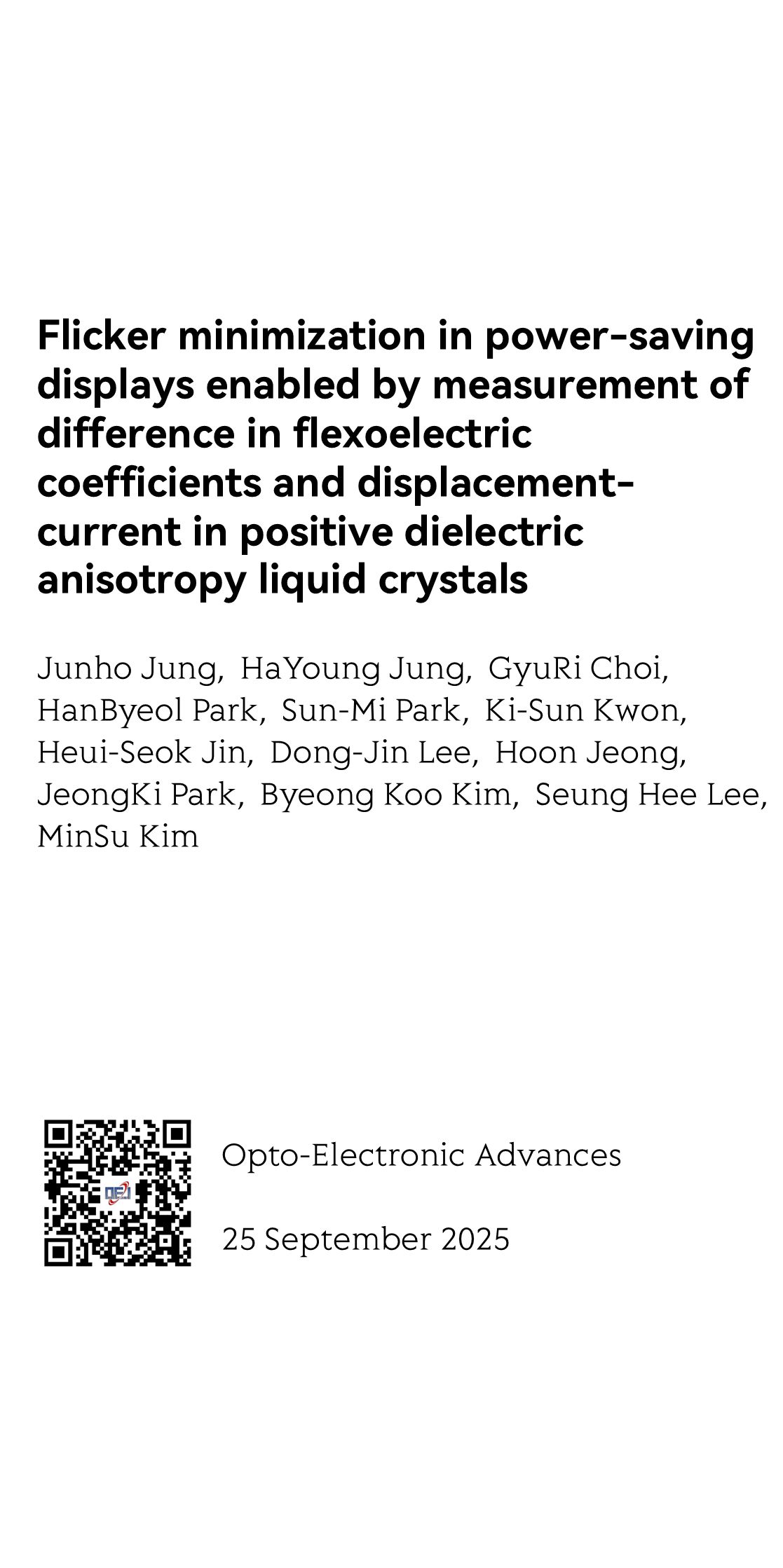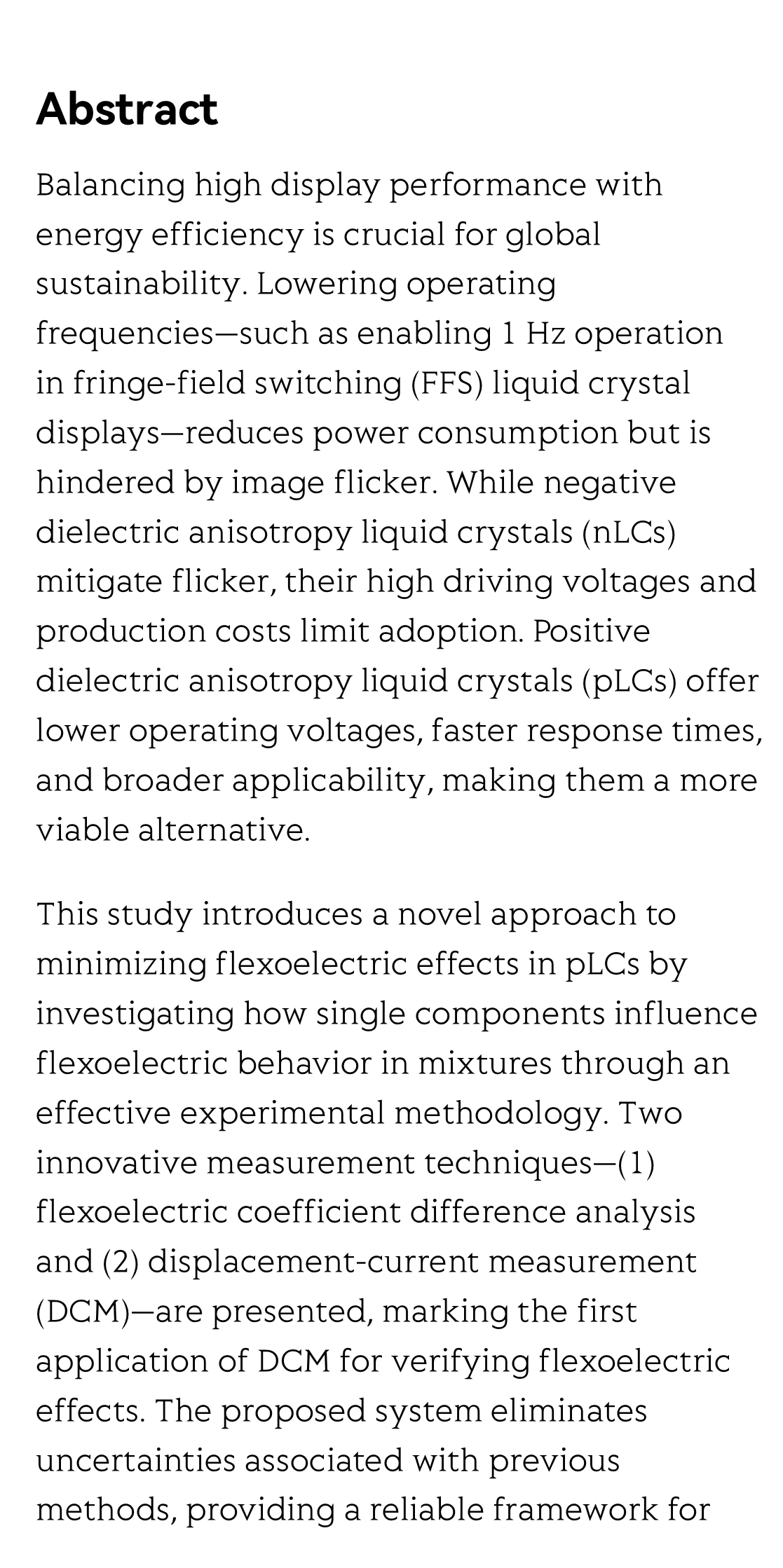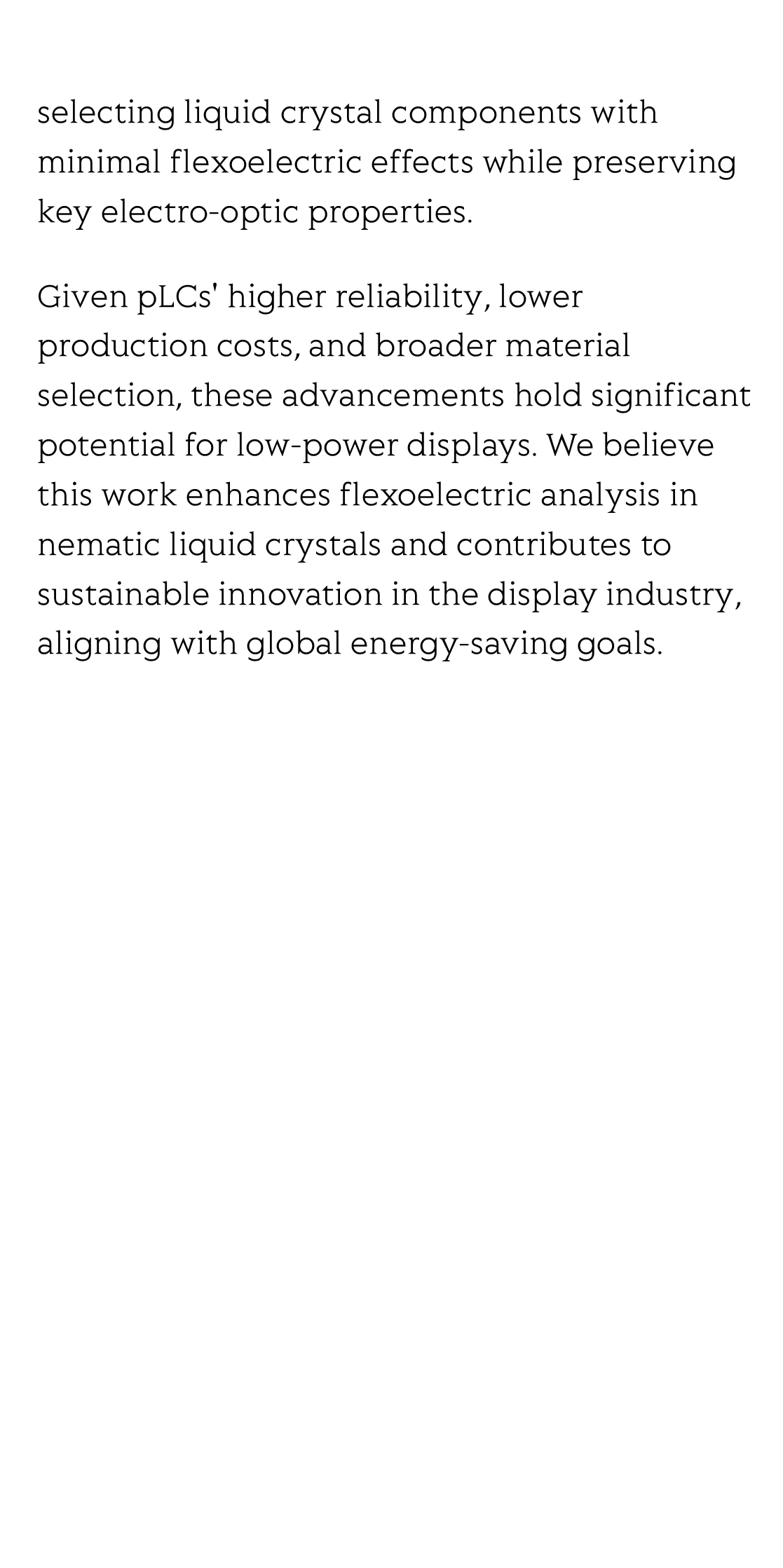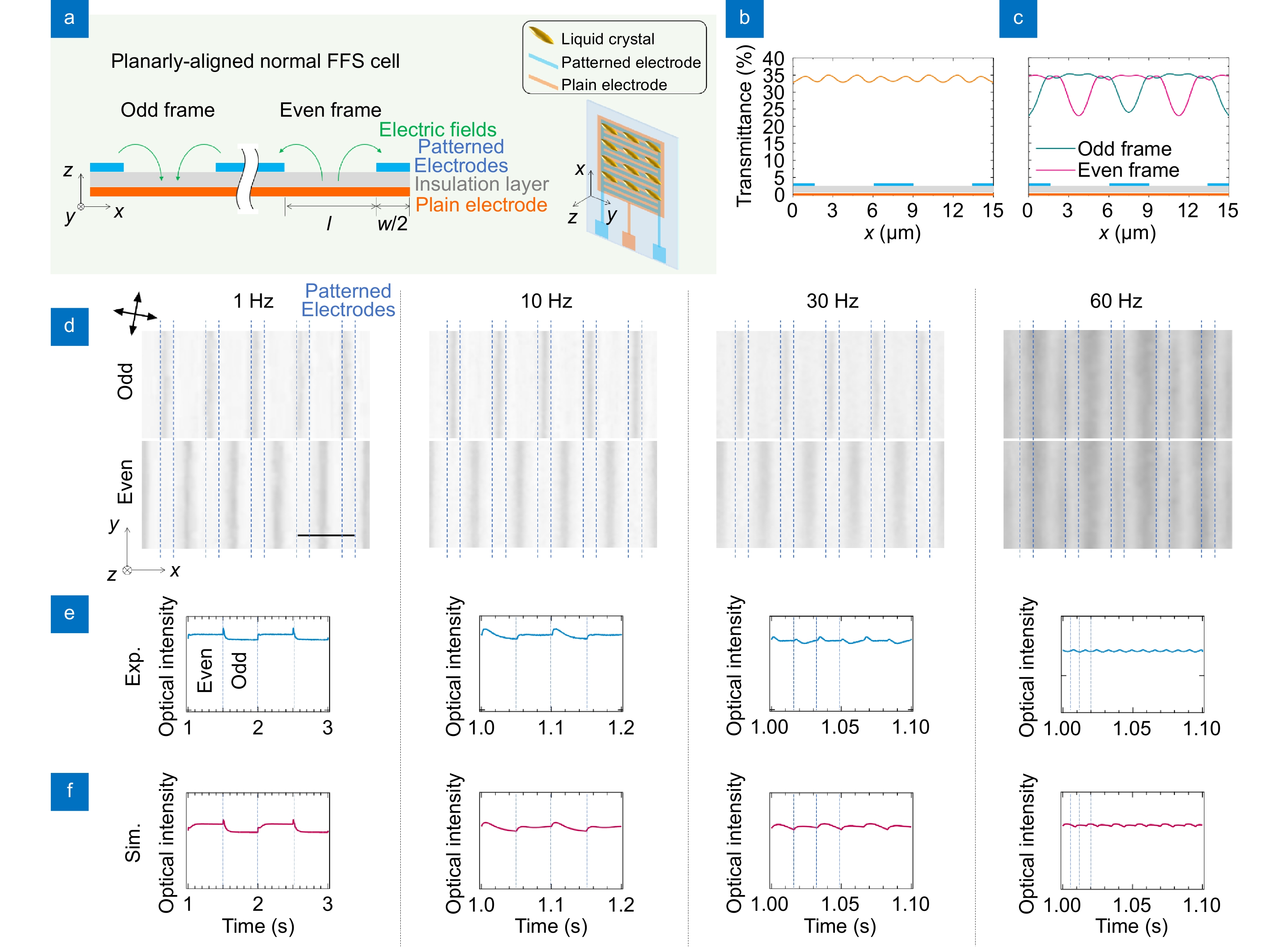Flicker minimization in power-saving displays enabled by measurement of difference in flexoelectric coefficients and displacement-current in positive dielectric anisotropy liquid crystals
通过测量正介电各向异性液晶中挠曲电系数和位移电流的差异,实现节能显示中的闪烁最小化
正誘電率異方性液晶におけるフレキソ電気係数と変位電流の差の測定によって実現された省エネ表示におけるフリッカー低減
양전기 이방성 액정에서 플렉소전기 계수와 변위 전류의 차이를 측정하여 구현된 전력 절약형 디스플레이의 플리커 최소화
Minimización del parpadeo en pantallas de ahorro de energía mediante la medición de diferencias en coeficientes flexoeléctricos y corriente de desplazamiento en cristales líquidos con anisotropía dieléctrica positiva
Minimisation des clignotements dans les écrans économes en énergie grâce à la mesure des différences dans les coefficients flexoélectriques et le courant de déplacement dans les cristaux liquides à anisotropie diélectrique positive
Минимизация мерцания в энергосберегающих дисплеях, обусловленная измерением разницы в коэффициентах гиброэлектричества и смещения-тока в жидкокристаллических веществах с положительной диэлектрической анизотропией
正誘電率異方性液晶におけるフレキソ電気係数と変位電流の差の測定によって実現された省エネ表示におけるフリッカー低減
양전기 이방성 액정에서 플렉소전기 계수와 변위 전류의 차이를 측정하여 구현된 전력 절약형 디스플레이의 플리커 최소화
Minimización del parpadeo en pantallas de ahorro de energía mediante la medición de diferencias en coeficientes flexoeléctricos y corriente de desplazamiento en cristales líquidos con anisotropía dieléctrica positiva
Minimisation des clignotements dans les écrans économes en énergie grâce à la mesure des différences dans les coefficients flexoélectriques et le courant de déplacement dans les cristaux liquides à anisotropie diélectrique positive
Минимизация мерцания в энергосберегающих дисплеях, обусловленная измерением разницы в коэффициентах гиброэлектричества и смещения-тока в жидкокристаллических веществах с положительной диэлектрической анизотропией




Reviews and Discussions
